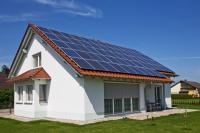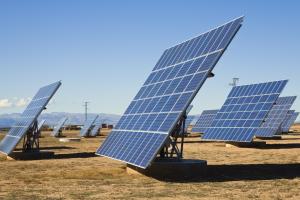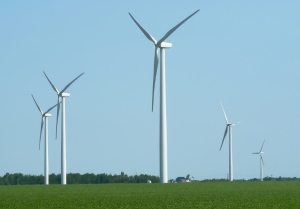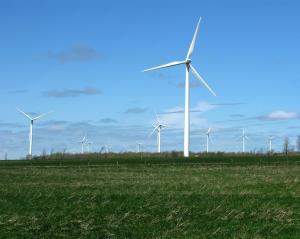News

April 26, 2010
Researchers at the Department of Energy's Lawrence Berkeley National Laboratory (Berkeley Lab) released a new study on the bill savings received by residential customers with solar photovoltaic (PV) power systems, under the net metering rates currently offered by California's two largest electric utilities. The report focuses on California, as it is the largest PV market in the U.S....
Read more

Berkeley Lab Study Finds Energy Efficiency Workforce Training Needs to Ramp Up to Meet Coming Demand
April 6, 2010
A new study by scientists at the Department of Energy's Lawrence Berkeley National Laboratory (Berkeley Lab) examines the workforce needs of the energy efficiency services sector, and finds that the speed with which employment will grow will depend in part on how effectively the nation deploys training and education programs for the energy efficiency workforce....
Read more

February 25, 2010
A new analysis by scientists at the Department of Energy's Lawrence Berkeley National Laboratory (Berkeley Lab) for the Western Governor's Association explores renewable resource decisions in the West. The report's "sensitivity analysis" examines how decisions about which renewable sources are chosen, and how transmission lines are expanded, are affected by changes in policies and other...
Read more

February 23, 2010
Nicotine in third-hand smoke, the residue from tobacco smoke that clings to virtually all surfaces long after a cigarette has been extinguished, reacts with the common indoor air pollutant nitrous acid to produce dangerous carcinogens. This new potential health hazard was revealed in a multi-institutional study led by researchers with the Lawrence Berkeley National Laboratory (Berkeley Lab)....
Read more
February 17, 2010
The fact that glaciers in the Himalayan mountains are thinning is not disputed. However, few researchers have attempted to rigorously examine and quantify the causes. Lawrence Berkeley National Laboratory scientist Surabi Menon set out to isolate the impacts of the most commonly blamed culprit—greenhouse gases, such as carbon dioxide—from other particles in the air that may be causing the...
Read more

January 12, 2010
The stimulus package passed in 2009 by Congress may help shovel-ready community wind projects move ahead, according to a new report by Mark Bolinger, a scientist in the Environmental Energy Technologies Division of the U.S. Department of Energy's Lawrence Berkeley National Laboratory. Bolinger analyzed the impact of two new incentives for wind power that were included in the Recovery Act....
Read more

December 15, 2009
Emissions of methane, a potent greenhouse gas, from local sources in California are higher than previously thought, according to direct measurements made by a research team led by Marc Fischer at Lawrence Berkeley National Laboratory's Environmental Energy Technologies Division (EETD). Attempting to pinpoint the source of the added emissions, the collaborative team, including EETD and National...
Read more

December 14, 2009
The China Energy Group, formed by Mark Levine in 1988, has been an instrumental behind-the-scenes advisor and partner in the greening of China, working with Chinese agencies to build domestic know-how in energy efficiency....
Read more

December 10, 2009
Over 30,000 megawatts of wind energy capacity are installed across the United States and an increasing number of communities are considering new wind power facilities. Given these developments, there is an urgent need to empirically investigate typical community concerns about wind energy and thereby provide stakeholders involved in the wind project siting process a common base of knowledge. A...
Read more

November 16, 2009
Dan Rather Reports, a newsmagazine show airing on HDNet, interviewed Marc Fischer of the Environmental Energy Technologies Division for a segment about reducing greenhouse gas emissions through carbon offsets. Fischer's research focuses on measuring regional emissions of greenhouse gases through direct measurement. The show aired November 11....
Read more
October 27, 2009
Researchers at the Department of Energy's Lawrence Berkeley National Laboratory (Berkeley Lab) released a new study on the installed costs of solar photovoltaic (PV) power systems in the U.S., showing that the average cost of these systems declined by more than 30 percent from 1998 to 2008. Within the last year of this period, costs fell by more than 4 percent....
Read more

October 26, 2009
An NAS report estimates the hidden costs of energy production and use in 2005 were $120 billion with the single largest expense attributed to health damage from air pollution associated with electricity generation and motor vehicle transportation....
Read more

February 25, 2009
A new study on the installed costs of solar photovoltaic (PV) power systems in the U.S. shows that the average cost of these systems declined significantly from 1998 to 2007, but remained relatively flat during the last two years of this period....
Read more

February 23, 2009
Research conducted at the Department of Energy's Lawrence Berkeley National Laboratory suggests that operating buildings more energy efficiently could have benefits for the health of occupants and, surprisingly, also for their comfort.The researchers, Mark Mendell and Anna Mirer of Berkeley Lab's Environmental Energy Technologies Division, analyzed data collected from 95 air-conditioned office...
Read more